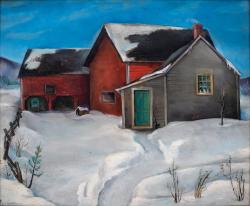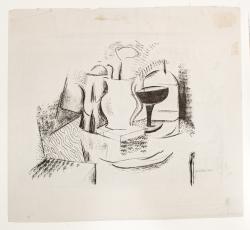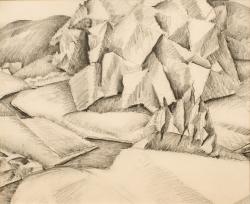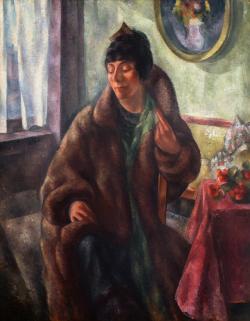Throughout the 1910s and 1920s, Woodstock artists associated with the Art Students League and others worked in a variety of styles. Some favored Birge Harrison’s subtle Tonalist approach; others, the painterly brushstrokes and light of Impressionism; and still others the jewel-like tones of the Post-Impressionist palette.
Works influenced by a number of European avant-garde movements also made their marks in Woodstock. Among those experimenting with varying degrees of abstraction were Konrad Cramer, Andrew Dasburg, and Henry Lee McFee, who were dubbed the Rock City Rebels after the part of Woodstock where they lived. Cramer, born in Germany, drew upon his experiences there with the radical art of Der Blaue Reiter, a group that used exaggerated forms and highly keyed colors to convey emotion. Dasburg had visited France, where he met Henri Matisse, who emphasized color for its own sake—a style called Fauvism. In Paris, Dasburg also studied the work of Paul Cézanne and Cubism, perhaps the most influential of all modernist approaches, based on fragmented images seen from different viewpoints. Elements of all these styles are not only seen in the work of the Rock City Rebels but in that of other Woodstock artists as well.
Artists of all stylistic bents came together to establish the Woodstock Artists Association in 1919, a much-needed venue for exhibitions that remains active today as the Woodstock Artists Association and Museum






![[abstract photograph] by Konrad Cramer, 1945](https://www.nysm.nysed.gov/sites/default/files/styles/250px_wide/public/cramer_konrad-abstract_photograph-kcr0009.jpg?itok=52LuK6cm)






